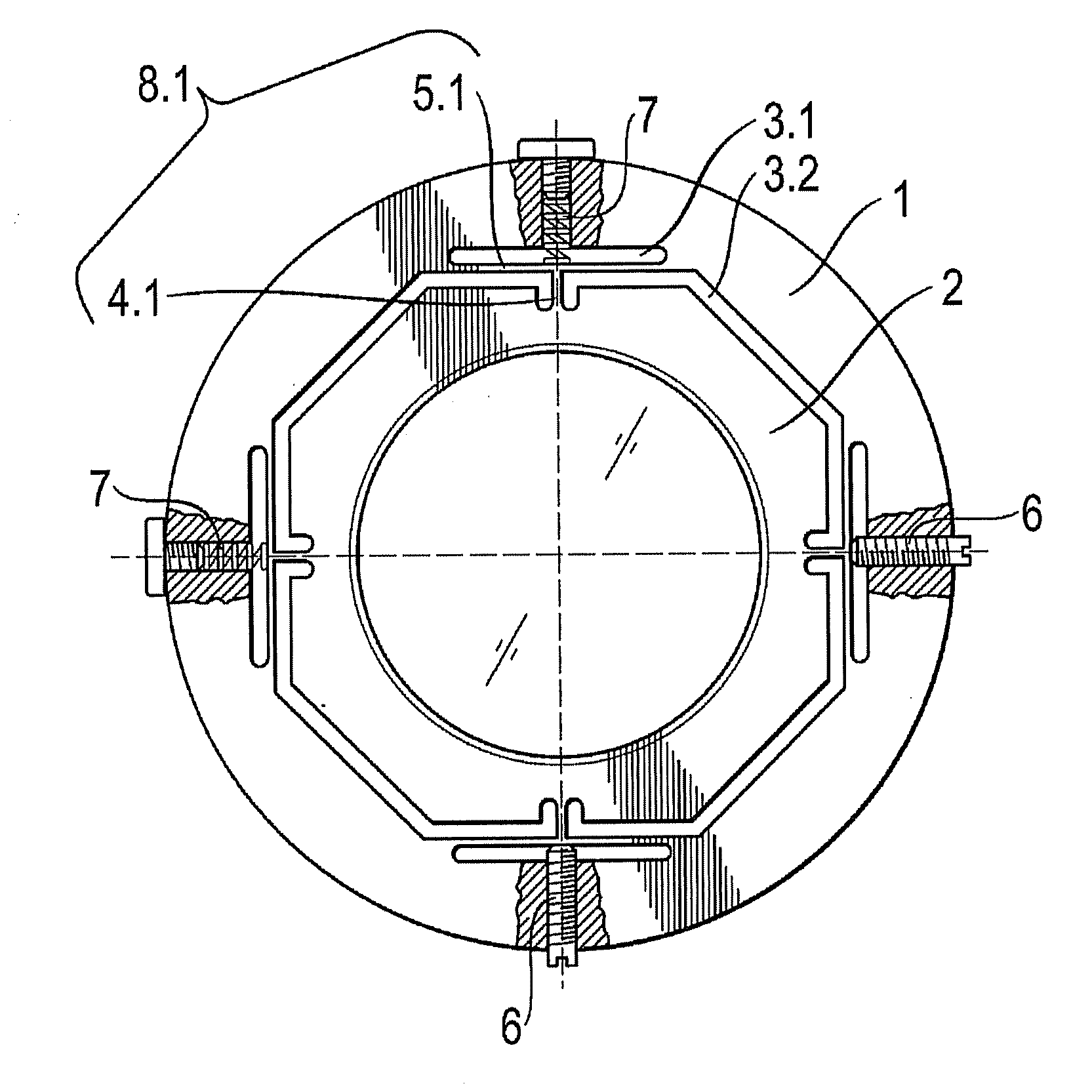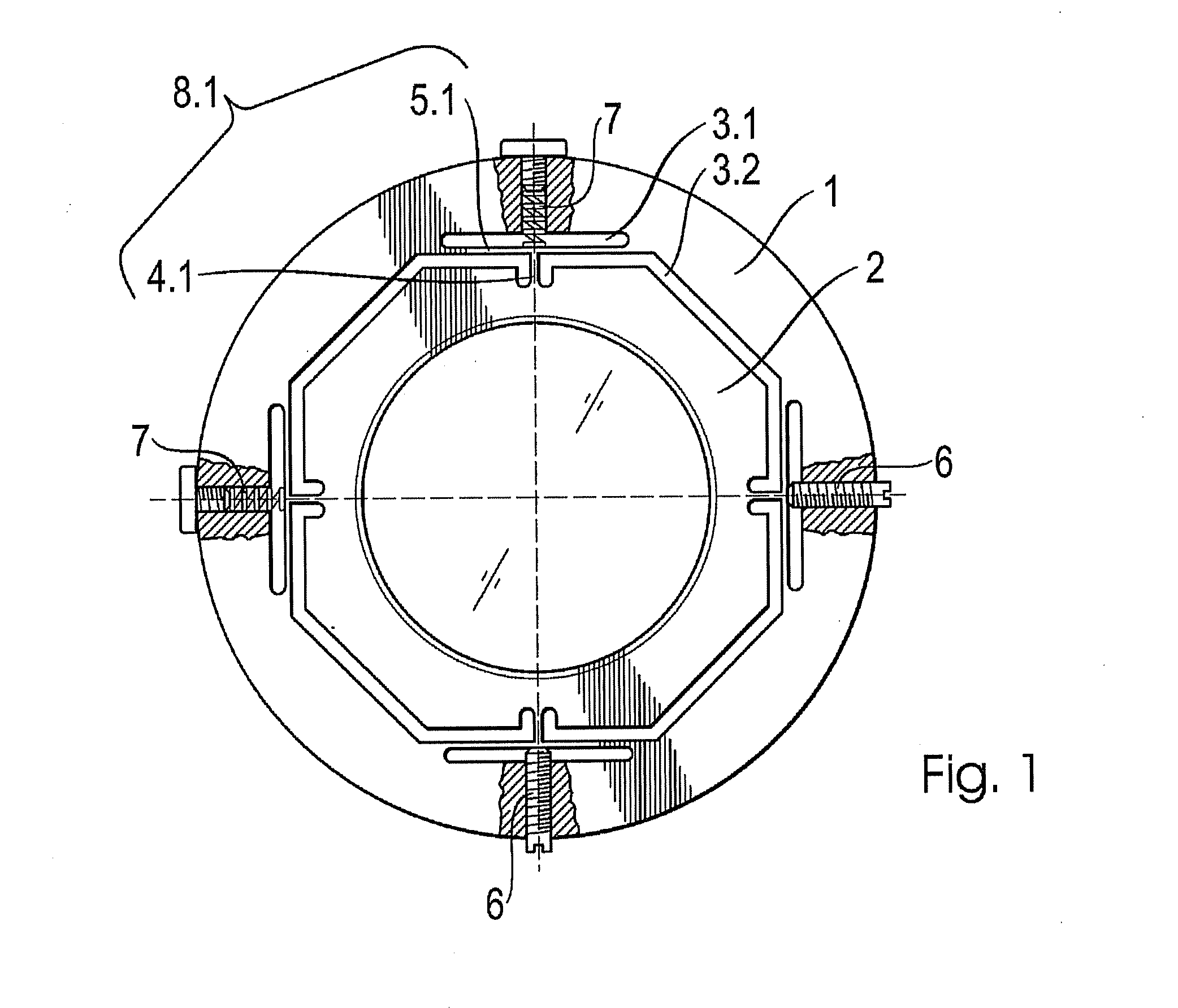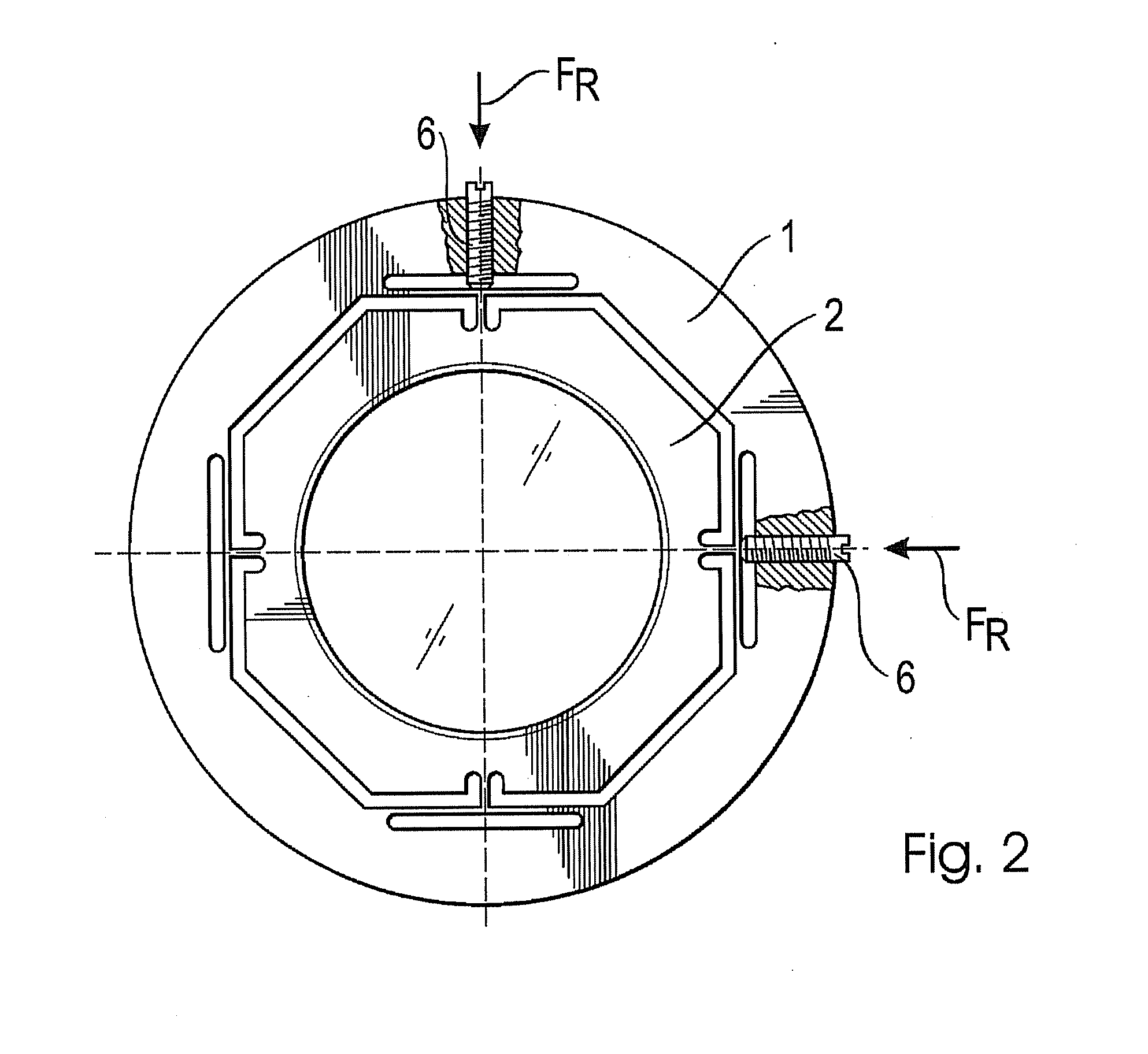Monolithic optical mount
a monolithic and optical mount technology, applied in the field of monolithic optical mounts, can solve the problems of increased production costs, increased production costs, and increased deformations of the inner parts, and achieves the effects of shortening the hinged brackets, reducing production costs, and increasing lateral stiffness
- Summary
- Abstract
- Description
- Claims
- Application Information
AI Technical Summary
Benefits of technology
Problems solved by technology
Method used
Image
Examples
Embodiment Construction
[0036]The embodiments shown in FIGS. 1 through 4 of a monolithic optical mount according to the invention are optical mounts with lens mounts. Similar to mounts known in prior art from DE 10 2007 030 579 A1 are made from a rotary-symmetrical planar body, particularly comprising steel, aluminum, or brass and are divided by several cutouts 3 into a stationary outer mount ring 1 and a laterally adjustable inner mount ring 2.
[0037]In general, using an optical mount according to the invention other optical elements, such as mirrors or beam splitters, may also be mounted. In general, they are not subject to such precise adjustment requirements, thus the mount is particularly useful for lens mounts.
[0038]Also similar to the lens mount according to DE 10 2007 030 579 A1, in a mount according to the invention uniform manipulator units are formed by the cutouts 3, equally off-set in reference to each other, by which at a certain introduction of a radially acting force FR a displacement of the...
PUM
 Login to View More
Login to View More Abstract
Description
Claims
Application Information
 Login to View More
Login to View More - R&D
- Intellectual Property
- Life Sciences
- Materials
- Tech Scout
- Unparalleled Data Quality
- Higher Quality Content
- 60% Fewer Hallucinations
Browse by: Latest US Patents, China's latest patents, Technical Efficacy Thesaurus, Application Domain, Technology Topic, Popular Technical Reports.
© 2025 PatSnap. All rights reserved.Legal|Privacy policy|Modern Slavery Act Transparency Statement|Sitemap|About US| Contact US: help@patsnap.com



